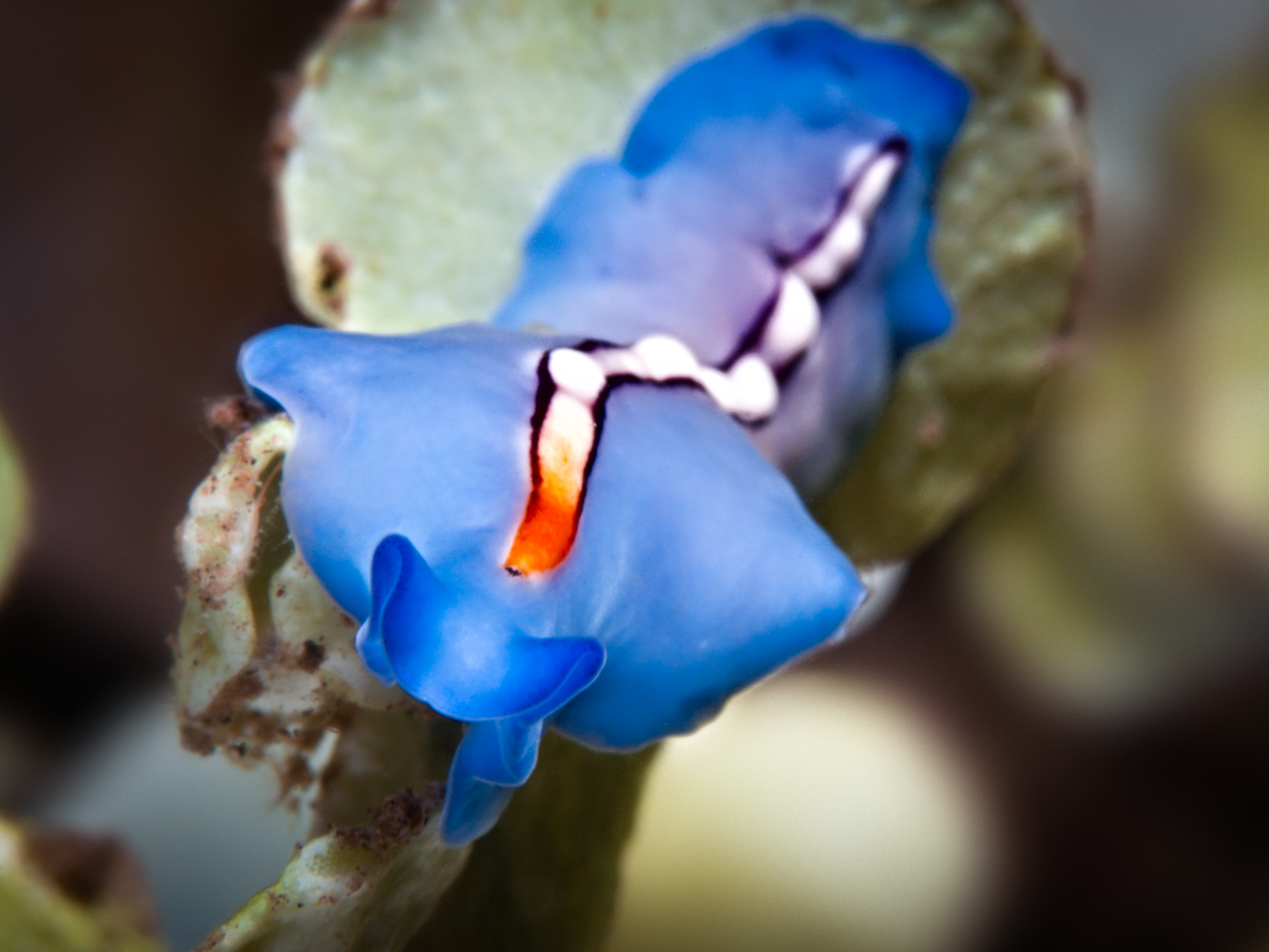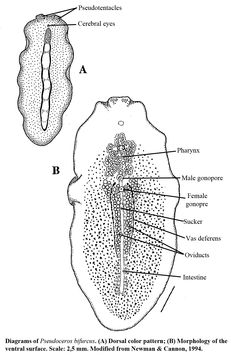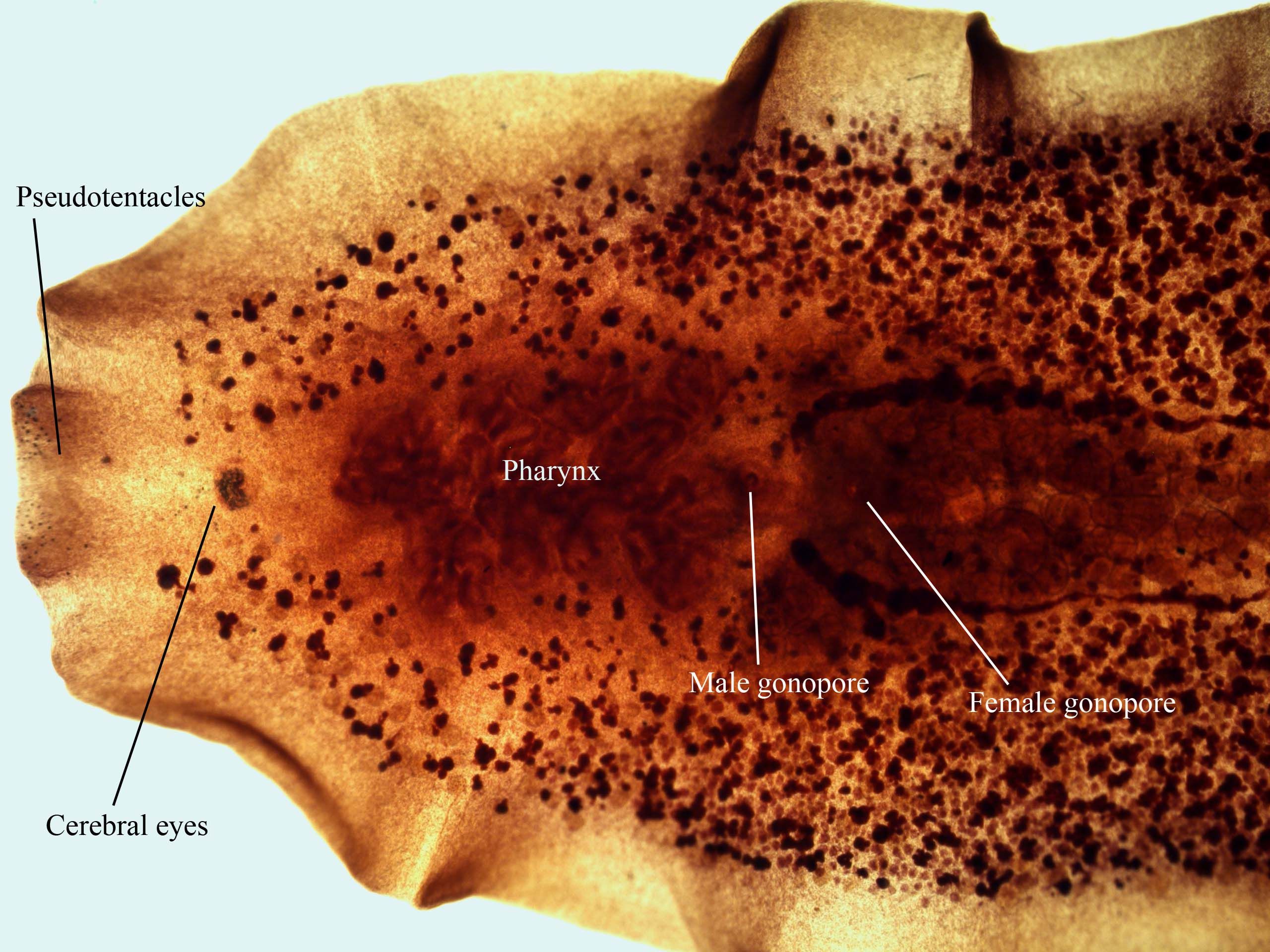Nutrition and Form
These flatworms undergo triploblastic development, but they are also acoelmates, which means that they lack a body cavity (Cambell, 2008). Pseudoceros bifurcus do not have a skeletal system nor do they have a respiratory system. Their flat shape works to their advantage. With this shape all of their cells are close to the surrounding water for gas exchange and to eliminate nitrogenous waste (Cambell, 2008). These flatworms are bilaterally symmetrical, which means if you were curious enough to cut them down the middle either side will resemble the other. There is only have one opening for their body. This one opening is the mouth; it is where food comes in and waste products are excreted (Ward, 2005).
Figure 1. Photo taken by Bolanos, Marcela Fig. 2. Flatworm picture taken by Bolanos, Marcela
The “eyes” of this flatworm are photosensitive cells; they are also the parts of the worm that stand out the most. Photosensitive cells are a type of neuron in the retina. The cells are responsible for reacting to light. Their eyes are found on the cerebral eyespot and form round clusters. Their types of “eyes” cannot depict images like humans' do but because of how simple they are, they are still very sensitive to light. When triggered, send reactions to nerve cells (Bousmis, 2014). Their eyes cannot make out images; they can only distinguish light from dark. As the eyes sense bright light, they retreat to a darker place and are usually found under rocks and in crevices (Seifarth, 2002).
 Since the flatworm is a hermaphrodite,
meaning it has both male and female reproductive organs, and their bodies are
already so small, a high percentage of them is made up of testes and ovaries. Another high percentage of
their body is occupied by their stomach which is lined with cilia to
carry food in to digest and move the food along their digestive
tract (Seifarth, 2002). These organisms feed on various
vertabrates. (Seifarth, 2002).
Since the flatworm is a hermaphrodite,
meaning it has both male and female reproductive organs, and their bodies are
already so small, a high percentage of them is made up of testes and ovaries. Another high percentage of
their body is occupied by their stomach which is lined with cilia to
carry food in to digest and move the food along their digestive
tract (Seifarth, 2002). These organisms feed on various
vertabrates. (Seifarth, 2002).
Fig. 3. Photo taken by Josef Litt
But what about a second breakfast?
This flatworm relies heavily on its sense of smell to find food and other necessities. Their prey is engulfed by the pharynx, which can then grow to be the size of the whole flatworm. Chemosensory detectors recognize chemicals and compounds that let a flatworm know where its food is, this also helps them find mates and avoid predators. These chemosensory detectors are located on the ventral pseudotentacles of the flatworm (Seifarth, 2002).
Curious about how the racing stripe flatworm famously reproduces? Click here!
References | Home
